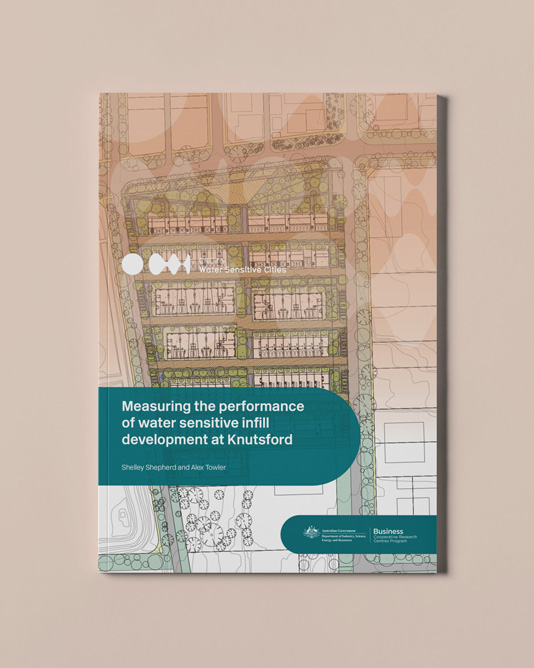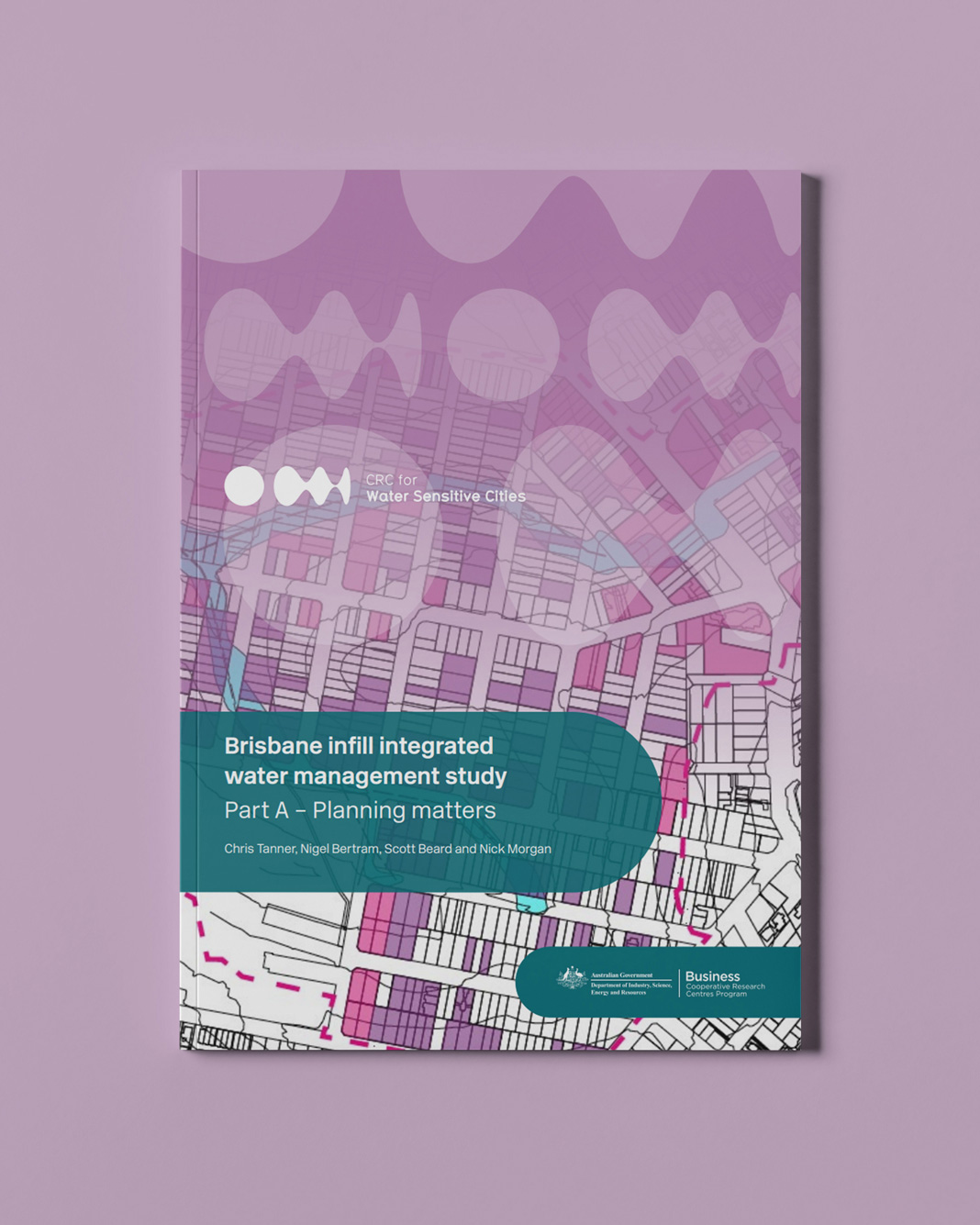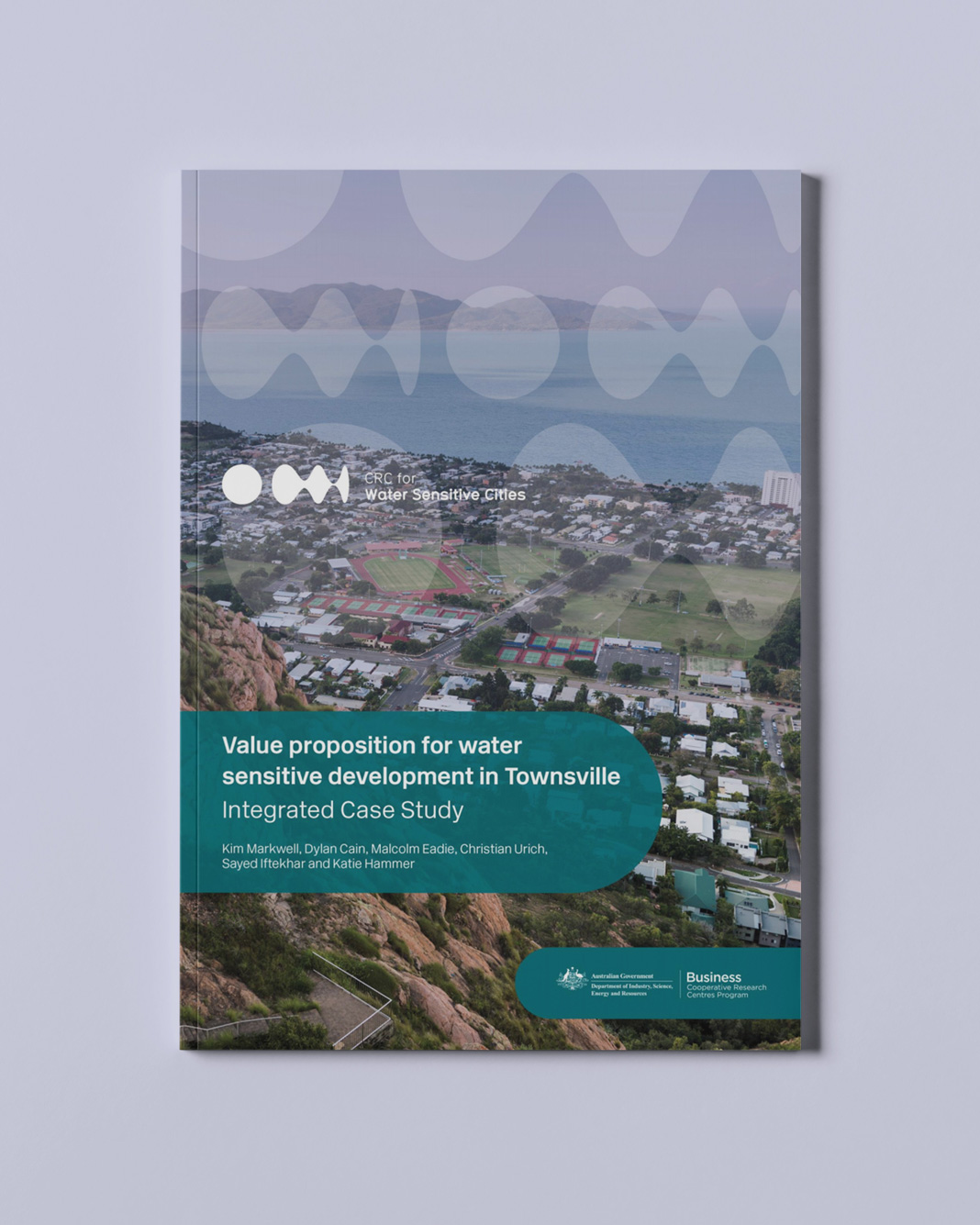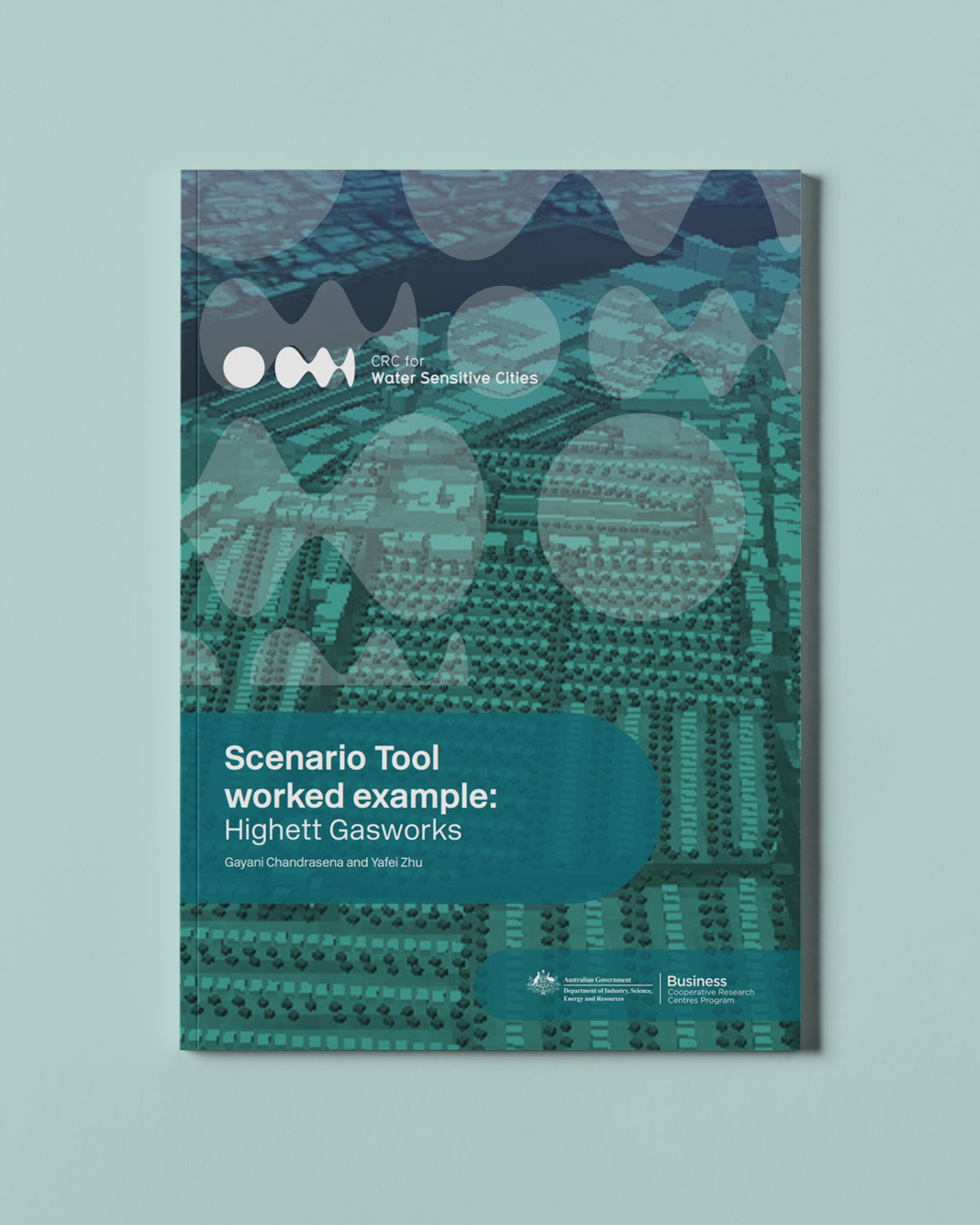Recent reports
To maintain the momentum for change, one of the final papers released by the CRC for Water Sensitive Cities (CRCWSC) – Harnessing hybrid systems for transformative cities – sets out an agenda for the next phase of scaling up water sensitive practices. It provides a framework and direction for collective research and action.
This Think Tank paper introduces the concept of hybrid urban water systems. These systems merge centralised and decentralised solutions, as well as blue–green technologies with grey technologies. They are designed to provide multiple functions and benefits in response to local context. This means they can be customised and implemented as and when needed. This in turn enables cheaper servicing of out-of-sequence urban development that otherwise challenges the capacity of centralised infrastructure to meet demand growth, and can increase centralised water system robustness to make our cities more resilient.
The paper discusses ways to enable and scale the adoption of this approach:
- Advance new funding and financing models that address barriers to mainstream uptake of hybrid water solutions.
- Integrate with sectors beyond water (e.g. urban planning, transport, energy, waste disposal and health), to respond to urban challenges holistically
- Use pilot projects that support scaling out (so that more practitioners are aware of and apply water sensitive city practices), scaling up (so that water sensitive city practices are reflected in policies and regulations) and scaling deep (so that water sensitive city practice is evident in behaviours and beliefs throughout an organisation).
This final point emphasises the importance of demonstrating how water sensitive principles work in practice. The following new reports illustrate how water sensitive city tools can be applied in different contexts.
Measuring the performance of water sensitive infill development in Knutsford summarises how CRCWSC tools have been applied to a medium density infill development in Perth. The study demonstrates how the Infill Performance Evaluation Framework and the Benefit: Cost Analysis Tool have been applied to this site. It examines the performance of 3 scenarios:
- existing – the pre-development state of low density residential development
- business as usual – common infill building practice
- water sensitive – water sensitive building typologies.
Brisbane infill integrated water management strategy investigates the impacts of a water sensitive cities approach to infill development in Brisbane. The study demonstrates how the CRCWSC’s Infill Performance Evaluation Framework, Scenario Tool and Benefit: Cost Analysis Tool have been applied to this site. It:
- identifies alternative development typologies –current, business as usual and new alternative typologies
- examines bio-physical comparisons of these typologies
- examines economic comparisons of the typologies.
Part A summarises the planning implications, identifies possible strategies for implementation and provides a brief commentary on the reasons for these ideas. Part B contains the technical investigations that underpin the ideas presented in Part A.
Value proposition for water sensitive development in Townsville focuses on applying the CRCWSC’s Scenario Tool and INFFEWS Benefit: Cost Analysis and Value tools to assess the benefits of various water management scenarios. The tools were applied at both the whole-of-city scale and the precinct scale, to explore how the outputs can be used for different objectives and at different scales.
Scenario Tool worked example: Highett Gasworks is a new resource for users of the Scenario Tool. Using a hypothetical case study, it steps users through the process of setting up the tool and assessing how various development options will impact urban heat and the water cycle. The hypothetical case study includes discussion of the site background, scenario selection, input data preparation, the model set up and suggestions on how to interpret model results such as the heat maps and water cycle infographics.



